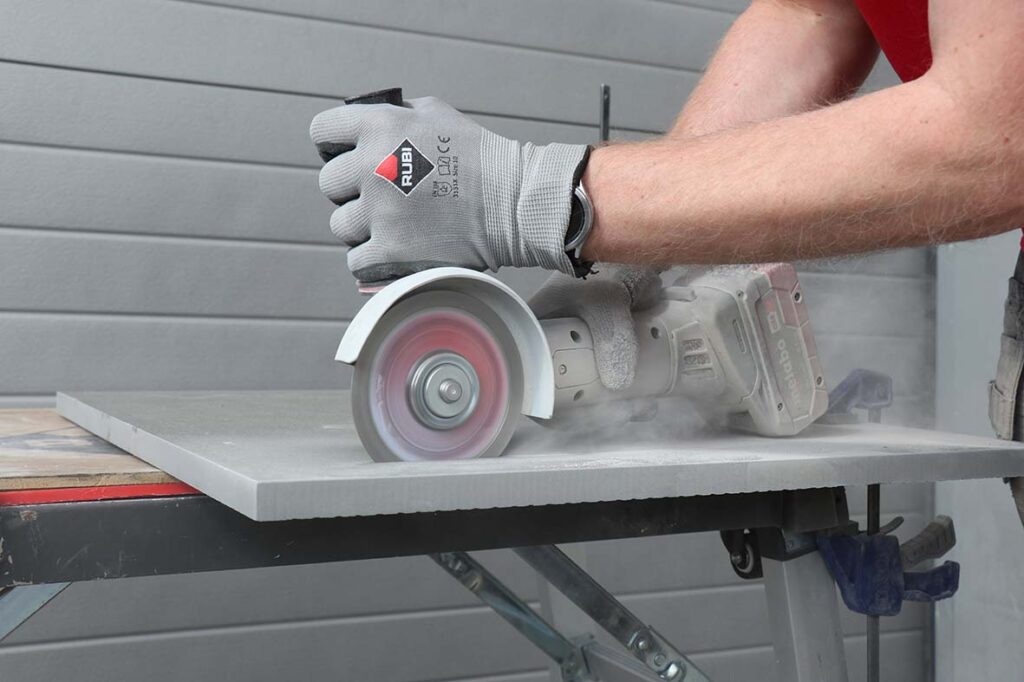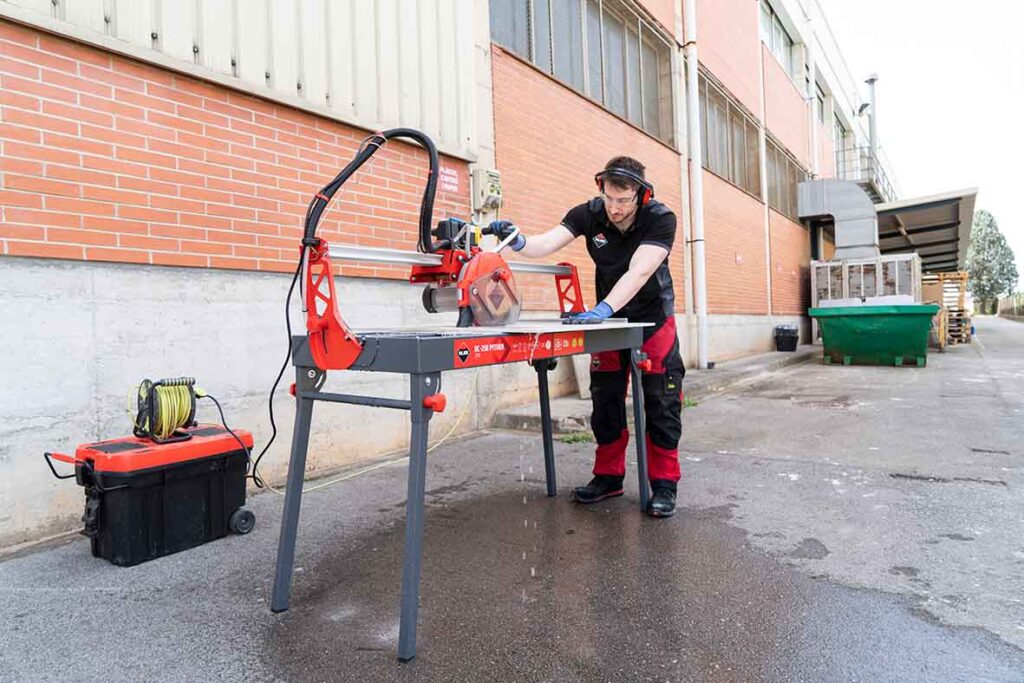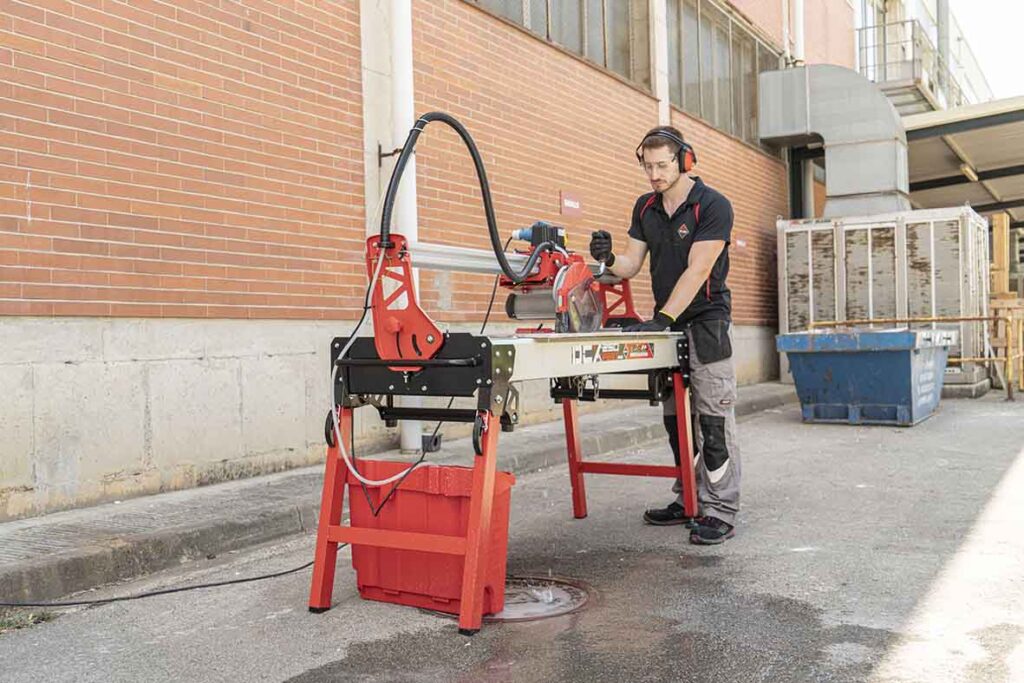If you’ve ever been cutting 20mm porcelain tiles, you’ll know it’s not the easiest job, even for seasoned tilers. These tiles are more dense than ceramics. Achieving clean cuts takes more than just brute force; you need the right tools, a steady hand, and patience to do it properly. No matter if you’re just learning how to tile, or think you know everything, in this guide, we’ll break everything down for you. We’ll discuss how to get clean, accurate cuts on 20mm tiles, the machines and blades you should use, and the common mistakes to avoid at all costs.


Understanding the Challenge
Unlike standard indoor tiles, cutting 20mm porcelain tiles is heavy-duty stuff. Its thickness and density mean your usual cutter might not be up for the task. Most manual tile cutters don’t stand a chance with 20mm porcelain. More often than not, you’ll end up with a cracked tile instead of a clean cut.
From what we’ve seen, most of the issues come down to technique. People either use the wrong blade, rush through the cut, or skip steps that really matter. That’s when you start getting chipped edges, wobbly lines, or cuts that have been made out of alignment.
So, if you’re going to put your time into a job like this, it really is worth putting a bit of money into the right gear from the beginning.
Recommended Cutting Machines
RUBI DC Python
This wet saw is a bit of a workhorse. Designed for thicker materials, the DC Python delivers consistent cuts thanks to its solid rail system and stable blade control. It’s not just about power; this machine also manages water flow well, helping keep the blade cool while reducing debris.
RUBI DCX 250 Xpert
Taking on a big job? The DCX 250 Xpert might be your best friend. It’s built to handle repeated cuts through 20mm tiles without losing precision. The integrated C3 Python cooling system keeps everything running smoothly and extends blade life, something you’ll definitely appreciate mid-project.
Pro Tip: Always support the full length of the tile when cutting. Even a small wobble can lead to chipping. Rubi offer a range of side tables that attach to their cutters to assist you with this. Rubi has a range of side tables that are compatible with their bridge saws, take a look at them here.



Grinder Blades and Handheld Options
Sometimes a bench saw just isn’t practical. Maybe you’re working in a tight corner or need to shape tiles around awkward edges. That’s where grinders and smaller saws come in handy. But the blade makes all the difference.
RUBI TC-125 G2
The TC-125 G2 setup lets you use the smaller grinder blades, but on a circular saw that runs on a guide rail. It’s designed to give you smoother, straighter cuts without freehand guesswork. It’s a great middle-ground for accuracy and flexibility. And a bonus point for the TC-125 G2 is how easy it is to store. Large machines can take up a lot of space, but the TC machines come in a hard carry case for the saw itself, and the rails come in their own canvas bag. This makes the storage a much better solution to those who have less space.
RUBI Adder Blade
This diamond blade is built for the job. The continuous rim and reinforced core means it glides through 20mm tiles with minimal chipping. It also works wet or dry, so it’s handy if you’re switching between conditions.
RUBI TLG 125 Blade
Need something for longer sessions or tougher porcelain? The TLG 125 has a specific diamond rim that cools faster and reduces vibrations. If you’re short on time, dry cutting can still give great results, but only if your setup is spot-on.

Where It All Goes Wrong
Even the pros mess this up sometimes, and it usually comes down to the basics:
One of the biggest issues? Using the wrong blade. Not every blade is built to handle 20mm thick porcelain, so if you’re using one that’s too soft, too worn, or designed for thinner tiles, you’re basically asking for cracks.
Dust control is another thing that often gets ignored. If you’re dry cutting and not using extraction, or worse, skipping protective gear, it’s bad for your health.
Then there’s the classic mistake: rushing the cut. Trying to muscle your way through will almost always leave you with rough edges or a snapped tile. The blade should do the hard work, you’re just guiding it.
Cooling is key, too. If you’re working with a wet saw and the water flow isn’t consistent, your blade’s going to overheat, and that affects both the finish and the life of the blade.
And finally, tile support. These 20mm slabs aren’t light. If they’re not sitting fully supported, they can flex or crack right at the end of the cut.
Final Thoughts
At the end of the day, cutting 20mm porcelain tiles isn’t about powering through. It’s about taking your time, using the right setup, and paying attention to the details.
Machines like the RUBI DC Python or DCX 250 Xpert, paired with quality blades like the RUBI Adder or TLG 125, really do make a difference. Get the prep right, avoid those common slip-ups, and your cuts will come out clean, precise, and frustration-free.



Post a comment